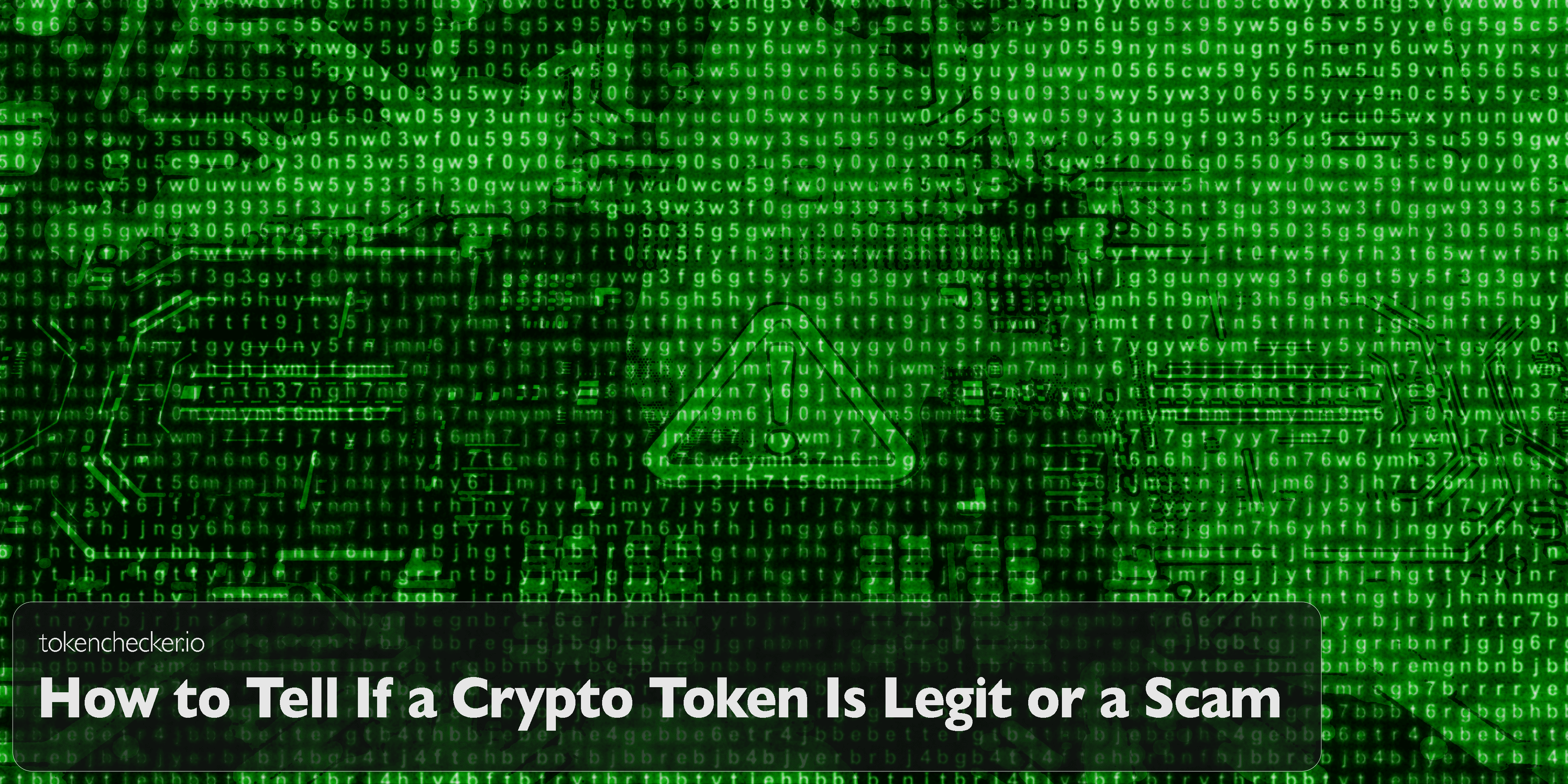
How to Tell If a Crypto Token Is Legit or a Scam
Introduction
Crypto isn’t just a revolution; it’s a battlefield. Every week, new tokens launch. Some offer real utility and innovation. Many, however, are engineered scams designed to part you from your funds before you realize what happened.
This guide goes beyond generic advice. It provides an advanced framework grounded in on-chain forensics, smart contract behavior, and scam psychology, the same mechanics tokenchecker.io uses to detect threats before they go mainstream.
1. Deconstruct the Narrative
Scams begin with emotional manipulation, not code. Scammers create narratives that generate hype and urgency. Ask yourself:
- Is this token solving a legitimate problem, or is it riding on trending buzzwords like “AI” or “L3”?
- Is the roadmap technical or just timeline-driven?
- Is the utility on-chain or only mentioned in pitch decks?
Legit projects don’t need to manufacture urgency; they demonstrate progress.
2. Ignore the Website, Read the Contract
A website can be beautiful and still be a front. The smart contract is the only source of truth. Use tools like tokenchecker.io or Etherscan to check:
- Is the contract verified and visible?
- Can the contract mint more tokens?
- Is there a blacklist or anti-sell function?
- Are there dynamic tax features controlled by the owner?
If you see any of these, stop. These are telltale signs of honeypots or rugpulls.
3. Validate Liquidity Lock Status
Rugpulls often rely on fake or weak liquidity locks. Even if the LP tokens are "locked," scammers may:
- Use fake locker contracts
- Pair the token with a non-redeemable asset
- Unlock the LP shortly after launch
tokenchecker.io highlights lock durations, lock contract sources, and LP token owners for this exact reason.
4. Analyze Holder Behavior
Token scams often hide their tracks across multiple wallets. Use wallet tracing tools or tokenchecker.io’s clustering feature to check:
- How many wallets were seeded from the deployer?
- Are top wallets linked or funded from the same source?
- Is the deployer still active in the top holders?
Look for patterns that suggest centralized control, circular trading, or artificial volume.
5. Look for Clone Contracts
Many scams don't write new code; they copy contracts from known rugpulls and change the branding. tokenchecker.io compares bytecode and identifies contracts with high similarity to known scams.
If the token is 90% similar to three previous scams, chances are it’s another duplicate rug.
6. Verify Audit Claims
Audit badges on websites mean nothing without verification. Ask:
- Who audited the contract?
- Is the report public and linked?
- Does the deployed contract match the audited version?
tokenchecker.io cross-references deployed bytecode with available audit reports to check for discrepancies.
7. Check for Hidden Behavioral Logic
Advanced scams use smart contracts with conditional logic that behaves differently under certain conditions:
- Sells are blocked at low gas levels
- Tax increases based on wallet identity
- Time-locked honeypot features
These are hard to spot manually, but tokenchecker.io simulates contract behavior to reveal these traps.
8. Compare Price Action vs. Real Activity
Fake volume and artificial pumps are common rugpull techniques. Look out for:
- Low number of holders but high transaction count
- Repetitive buy/sell cycles from the same wallets
- Liquidity shifting while price rises
If a token pumps 50x in a day but no one can cash out, it's not a moonshot, it’s a mousetrap.
9. Audit the Tokenomics
Good tokenomics show sustainability. Bad ones signal intent to exploit. Ask:
- Are there vesting schedules?
- Do team wallets have lockups?
- Are mint/burn functions public and renounced?
A legitimate token makes these mechanics visible. Scams keep them hidden or dynamic.
10. Evaluate Legal and Compliance Signals
A real project will show signs of accountability:
- KYC or doxxed team
- Legal disclaimers on the website
- WHOIS data that matches project claims
- Clear statements avoiding guaranteed returns
Tokens with no legal or public trace are often disposable scams.
Three-Layer Scam Filter
Use this filter before touching any new token:
- Narrative Check: Does the story make sense without the hype?
- Contract Check: Are there hidden risks in the code?
- Behavioral Check: Is the on-chain activity organic or manufactured?
If a token fails even one of these, move on.
Final Thoughts
Scam tokens are getting smarter, but so are detection methods. You don’t need to memorize every red flag; you need tools that reveal them. tokenchecker.io does exactly that by checking code, behavior, ownership, liquidity, and holder structure in seconds.
The best protection in crypto isn’t luck; it’s information.